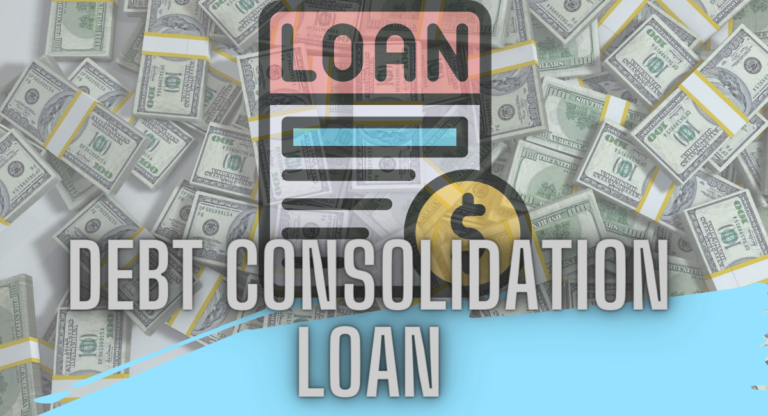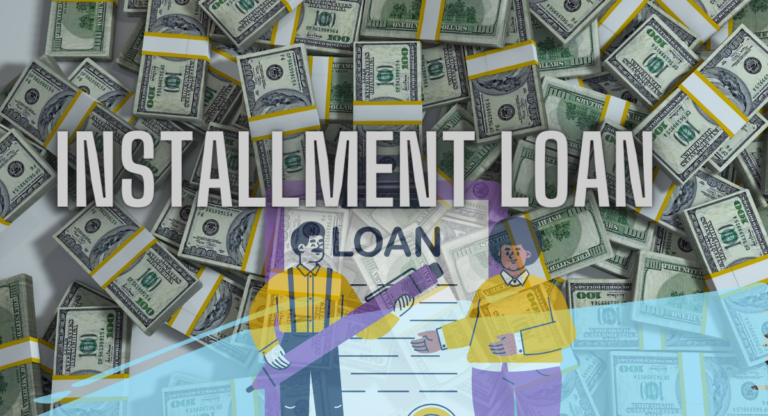To get an instant loan, find lenders online, check if you meet their requirements, fill out an application with your details, and if approved, you’ll get the money deposited into your bank account quickly.
Just make sure to repay it on time to avoid extra fees. Choosing the right loan might seem tricky, but it’s all about understanding your needs and comparing your options.
First, figure out why you need the loan. Then, learn about different types of loans, like personal loans or mortgages.
Compare things like interest rates and fees to see which loan will cost you less in the long run.
Make sure to check the loan’s terms, like how long you have to pay it back and if there are any extra fees for paying late. Your credit score also matters, so try to improve it if you can.
Don’t rush into the first loan you find, shop around and get quotes from different lenders to find the best deal.
If you’re unsure, it’s okay to ask for advice from a financial advisor. So let’s Started:
Calculate your Monthly EMI Cost Here> Loan Calculator

What Is a Loan?
A loan is a sum of money that is borrowed from a lender with the agreement that it will be paid back, typically with interest, over a specified period.
Loans are used by individuals, businesses, and governments to cover various expenses or investments when they don’t have the immediate funds.
The borrower agrees to certain terms and conditions, including the repayment schedule, interest rate, and any collateral required.
Loans can serve different purposes, such as purchasing a home (mortgage loan), financing education (student loan), or covering unexpected expenses (personal loan).
The terms of a loan vary based on factors like the borrower’s creditworthiness, the type of loan, and the lender’s policies.
Types Of Loans
Knowing about different types of loans is important. It helps us pick the right one for what we need, compare costs, manage our money well, avoid scams, build good credit, and be ready for emergencies.
Learn loan terms also helps us follow the rules and know our rights when borrowing money.
Overall, it helps us make smart choices with our money and stay safe financially. So let’s know each types of loans that available:
- Personal Loan
- Auto Loan
- Mortgage Loan
- Student Loan
- Business Loan
- Payday Loan
- Home Equity Loan
- Lines of Credit
- Secured Loan
- Debt Consolidation Loan
- Bridge Loan
- Installment Loan
- Federal Loan
- Peer to Peer Loan
How Does loan Work?
A loan functions as a financial arrangement where a borrower seeks and receives a sum of money from a lender, typically with an agreement to repay the borrowed amount along with interest over a specified period.
To obtain a loan, an individual, business, or government applies with a lender, detailing their financial circumstances and the purpose of the loan.
Upon approval, the lender disburses the funds, and the borrower is obligated to make regular payments, usually monthly, covering both the principal amount and the accrued interest.
The interest serves as the cost of borrowing and is calculated as a percentage of the outstanding loan balance.
Collateral, an asset pledged as security, may be required by the lender, especially in cases where the borrower’s creditworthiness is a concern. The timely repayment of loans positively impacts the borrower’s credit score.
Upon the completion of repayment, the loan is considered fulfilled, marking the end of the borrower’s financial obligation.
Different types of loans come with varying terms and conditions, and understanding these details is crucial for responsible financial management.
Components of a Loan
A loan typically consists of several key components that define its terms and conditions. Here are the primary elements:
- Principal:
- The principal is the initial amount of money borrowed. It represents the actual loan amount that the borrower receives and is obligated to repay.
- Interest Rate:
- The interest rate is the cost of borrowing money, expressed as a percentage. It determines the additional amount (interest) the borrower pays on top of the principal.
- Loan Term:
- The loan term is the period over which the borrower agrees to repay the loan. It is often measured in years. Shorter loan terms typically result in higher monthly payments but lower overall interest costs, while longer terms may have lower monthly payments but higher total interest paid.
- Repayment Schedule:
- The repayment schedule outlines the frequency and amount of each loan payment. Payments can be monthly, bi-monthly, or according to other agreed-upon intervals.
- Amortization:
- Amortization refers to the process of gradually paying off the loan balance over time through regular payments. Each payment includes both principal and interest, with a larger portion going toward interest in the early stages of the loan.
- Collateral:
- Collateral is an asset that the borrower pledges as security for the loan. If the borrower fails to repay, the lender may seize the collateral to recover the outstanding amount.
- Origination Fee:
- An origination fee is a one-time charge imposed by the lender for processing the loan application. It is usually expressed as a percentage of the loan amount.
- Credit Score:
- The borrower’s credit score is a numerical representation of their creditworthiness. Lenders use credit scores to assess the risk of lending money. Higher credit scores may result in lower interest rates.
- Terms and Conditions:
- The loan agreement includes specific terms and conditions that both the borrower and lender must adhere to. This legal document outlines rights, responsibilities, and any penalties for non-compliance.
- Default and Consequences:
- The loan agreement defines what constitutes a default (failure to meet payment obligations) and outlines the potential consequences, such as late fees, increased interest rates, or legal actions.
The Loan Process
The process of getting a loan involves looking at a person’s background and the documents they provide.
When someone wants to borrow money, they fill out forms and give information about their financial history, income, and other important details.
The lender then reviews this information, checks documents like pay stubs or tax records, and may also consider the person’s credit history.
Based on all these factors, the lender decides if the person is eligible for a loan and, if so, how much money they can borrow and at what interest rate.
The borrower and lender then agree on the terms by signing official documents. If the loan involves something valuable like a house or car, the lender may also assess its worth.
Once everything is approved, the lender provides the money, and the borrower begins repaying it in smaller amounts over time.
Eligibility Criteria
- Credit Score:
- Have a good credit score to show you can manage debt responsibly.
- Income:
- Show a stable and sufficient income to repay the loan.
- Employment History:
- Maintain a steady job history to demonstrate job stability.
- Debt-to-Income Ratio:
- Keep a lower ratio of debt to income for better financial health.
- Down Payment (For Certain Loans):
- Be prepared to make a down payment, especially for real estate transactions.
- Collateral (For Secured Loans):
- Provide valuable assets as collateral for secured loans.
- Loan Amount in Relation to Income:
- Ensure that the requested loan amount aligns with your income for manageable repayment.
- Age and Citizenship:
- Meet age and citizenship requirements set by the lender.
- Documentation:
- Provide accurate and complete documentation, including proof of income and identification.
- Purpose of the Loan:
- Understand and meet any specific requirements related to the loan’s intended use.
- Credit History:
- Maintain a positive credit history with a track record of timely payments.
- Loan-to-Value Ratio (For Real Estate Loans):
- Ensure that the loan amount doesn’t exceed a certain percentage of the property’s value.
how to get Instant loan?
- Choose the Right Loan:
- Decide on the type of loan that fits your needs.
- Check Your Credit Score:
- Know your credit score to understand your financial standing.
- Research Lenders:
- Explore different lenders and compare their offerings.
- Gather Documents:
- Collect necessary paperwork, like income proof and identification.
- Complete Application:
- Fill out the loan application with accurate information.
- Submit Documentation:
- Provide required documents to the lender.
- Wait for Approval:
- Be patient while the lender reviews your application.
- Receive Loan Terms:
- Get details on the loan amount, interest rate, and repayment terms.
- Review and Accept:
- Carefully review terms and accept if satisfied.
- Sign Agreement:
- Sign the official agreement to formalize the loan terms.
- Get Funds:
- Once approved, receive the loan funds from the lender.
FAQs
What is the interest rate on a loan?
The interest rate is the cost of borrowing money. It can be fixed (remains constant throughout the loan term) or variable (fluctuates based on market conditions).
How is my credit score important in getting a loan?
Your credit score reflects your creditworthiness. Lenders use it to assess the risk of lending to you. A higher credit score often results in better loan terms.
What is an amortization schedule?
An amortization schedule outlines the repayment of a loan, showing the breakdown of each installment into principal and interest over the loan term.
Can I repay my loan early?
Many loans allow early repayment, but it’s essential to check the terms. Some loans have prepayment penalties, while others may offer discounts for early repayment.
What happens if I miss a loan payment?
Missing payments can result in late fees, increased interest rates, and negative effects on your credit score. It’s important to communicate with the lender if you face difficulties.
How does loan refinancing work?
Refinancing involves taking out a new loan to pay off an existing one, often with better terms. It can lower monthly payments, reduce interest rates, or change the loan duration.
What is the difference between APR and interest rate?
The Annual Percentage Rate (APR) includes both the interest rate and other fees associated with the loan, providing a more comprehensive measure of the total cost of borrowing.







